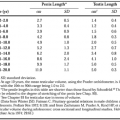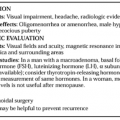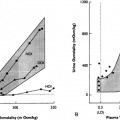NEUROSURGICAL MANAGEMENT OF PITUITARY-HYPOTHALAMIC NEOPLASMS
David S. Baskin
Advances in endocrinology, neuroradiology, and microneuro-surgery have revolutionized the care of patients with pituitary and hypothalamic tumors. With the development of accurate radioimmunoassays and an understanding of the interactions between the hypothalamus and the pituitary, sophisticated endocrine testing can be performed to define the nature of the dysfunction precisely. Neuroradiologic techniques, particularly high-resolution magnetic resonance imaging (MRI) and magnetic resonance angiography (MRA), enable the clinician to localize many structural abnormalities to within 1 to 2 mm. Improvements in neurosurgical technology, including the use of the operating microscope, special microinstrumentation, and minimally invasive techniques such as endoscopy and high-resolution ultrasonography enable the surgeon to secure total removal of the lesion, with preservation of endocrine function and significant lowering of morbidity and mortality.
The differential diagnosis of lesions in the sella and hypothalamic region is vast. Two common lesions are considered in this chapter: pituitary adenomas and craniopharyngiomas (see also Chap. 11, Chap. 17 and Chap. 18).
Stay updated, free articles. Join our Telegram channel

Full access? Get Clinical Tree







